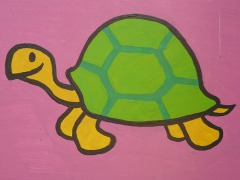- Home
- Speech Therapy
- Turn Coloring Pages Into Language Therapy
How to Turn Coloring Pages Into Language Therapy
You can turn coloring pages that your child enjoys into an effective, motivating tool for language therapy. And the good news is that it's quick and easy-to-make.
If you can find coloring books that are all about your child’s favorite character or TV show, then you’ve got some materials for language therapy.

If you can find just the right coloring book, I recommend that you get two if possible. One for your child to color, and one for you to turn into a therapy tool.
Or if you wish, you can buy just one and have your child color the pages before you use them for therapy. It’s your choice.
What's Your Child's Favorite Character?

Whether it’s Barbie, Sponge Bob or Elmo, you can use children’s fascination with their favorite characters to teach them some basic language concepts. Imagine how this could crank up their level of motivation!
My son always loved Curious George when he was younger. We were reading those books for years.
So his occupational therapist happened to find a Curious George coloring book at the store and remembered that he liked that character.
She bought it, brought it to the clinic, and used it a couple of times for his occupational therapy.
Soon after that our speech therapist found the coloring book and went to work with it. She took out some of the pages and laminated them.
Once she filled a three-ring binder with the laminated coloring sheets, she had a brand new therapy tool, perfect for a Curious George fan.
How to Use Coloring Pages for Language Therapy
Here’s how I would do this activity with my son. You can revise any of this that you wish to fit your own child’s needs.
- First I would tell him how many pages he will be doing. Five is usually a good number. Letting him know he has just a few to do will keep him encouraged and give him an end in sight.
- Then I would show him the first page. In our case I would ask, “What’s George doing?”
- If he didn’t answer the question, I
would ask, “What do you see in the picture?”
- If he still didn’t answer, I could help him using any number of prompts. The first step might be to ask, “What’s this?” If he said, “cake,” the next step would be to ask, “What is George doing with the cake?"
- Since he can read, I would hide the caption at the bottom of the page. The point here is that I want him to read the picture, not the words. Here, I’m giving him practice with looking for clues, drawing conclusions, and then forming a sentence about it without seeing the words. We’ll work on reading words during our reading time.
- Once I have successfully drawn these answers out of him, I could ask him to give me a sentence about the picture. He usually needs some prompting and help with this type of question.
- Once he gives me a correct sentence, I would praise him for good work.

It's Inexpensive, Easy-to-Make and Motivating
You couldn’t ask for a simpler activity to assemble. The materials are easy to afford, find, and put together.
If you don’t have a laminator, you can always cover the pages with clear contact paper.
Another option is to use clear binder pockets. All you have to do is slip those coloring pages into clear binder pockets, and load the binder pockets into a three-ring binder.
So between the cost of the coloring books, the material for covering the pages, and a small three-ring binder, you’re probably looking at twenty dollars or less for great language therapy materials.
All the items you need for this activity are probably available at your local discount store. If not, you can get most if not all of them from Amazon.
You can even get free coloring pages about your child's favorite character here.
Using tools that our children can relate to is an effective way to teach them just about any skill. This can increase their motivation and desire to participate and learn.
New! Comments
Have your say about what you just read! Leave me a comment in the box below.